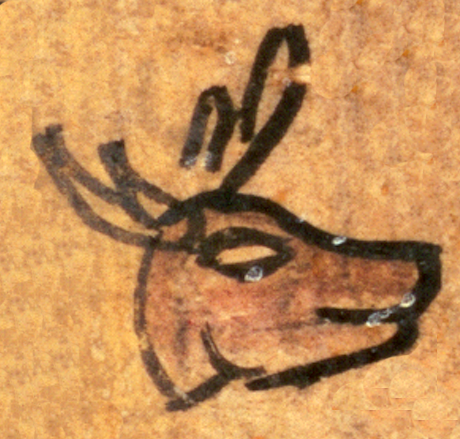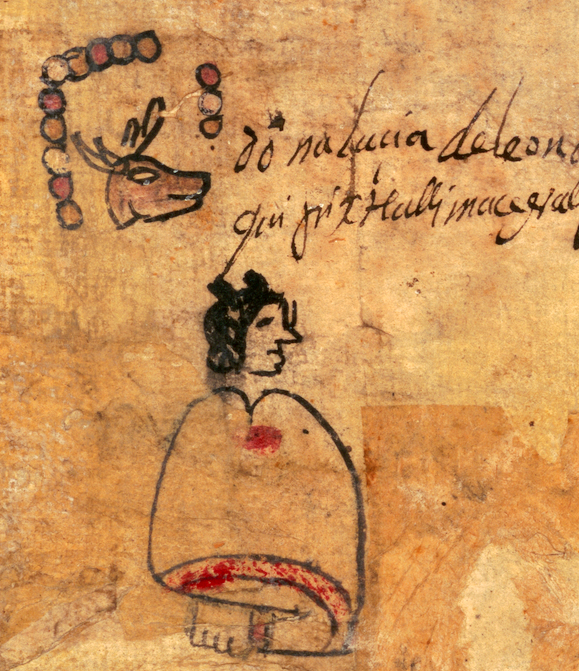mazatl (CQ)
This sign of the deer (mazatl) has been carved from the compound hieroglyph (with notation) of Matlactli Ome Mazatl (Twelve Deer, Twelve-Deer). It is the head of a deer in profile, looking to the viewer's right. It has four antlers. It is painted reddish-brown, but its eye and antlers are left natural.
Stephanie Wood
Mazatl is a sign in the calendar. The person who held this name was probably born on the day of 12-Deer in the calendar. Comparing this deer with a couple in the Codex Mendoza, note how the latter have the antlers painted turquoise--perhaps to identify their preciosity.
Stephanie Wood
covers ruling men and women of Tecamachalco through 1593
deer, venados, animals, animales, fechas, dates, calendars, calendarios

El Venado
The Codex Quetzalecatzin, aka Mapa de Ecatepec-Huitziltepec, Codex Ehecatepec-Huitziltepec, or Charles Ratton Codex. Library of Congress. https://www.loc.gov/item/2017590521/
The Library of Congress, current custodian of this pictorial Mexican manuscript, hosts a digital version online. It is not copyright protected.





